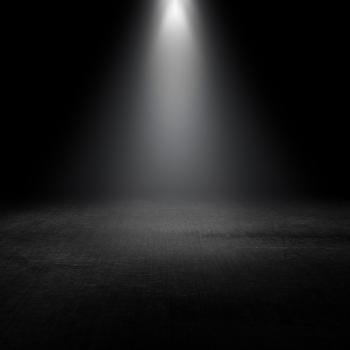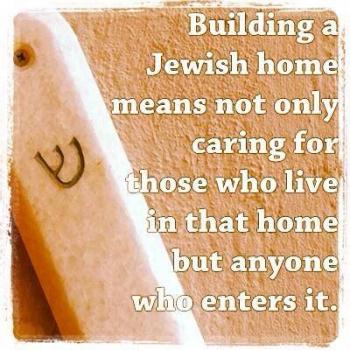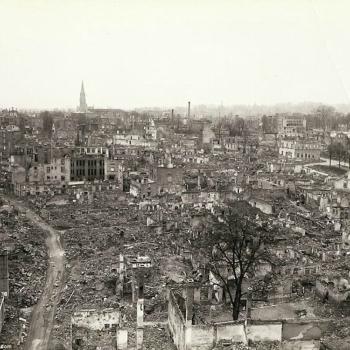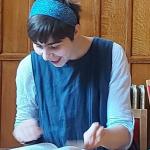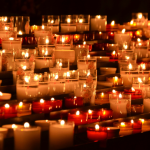As part of our recent conversation concerning Post-Rabbinic Judaism, some background, history, and context would be helpful – especially since many readers aren’t Jewish and may not be familiar with such things.
For example, not everyone understands that Judaism comes in a variety of forms and that the Jewish world has “denominations.” And I’ve had well meaning Christian friends think that Judaism operates much like it did in the Gospels. I’ve been asked if I knew any Pharisees, if our Temple had scribes, how I coped with “being under the weight of the law” and so on.
Reform Efforts
Until modern biblical scholarship arose, Judaism had variations, sects, different regional traditions, but not really denominations. At the root of the denominational differences is the approach and understanding of Torah and revelation.
New ways of understanding and studying Torah were explored by Jewish reformers, centered in Germany in the mid-to-late 1800s who began incorporating the emerging biblical scholarship of the day – hermeneutics, form criticism, higher criticism, and the historical method – alongside an agenda of assimilation into the mainstream German culture.
The result was a view of Torah and other sacred writings as having multiple authors, having been written over centuries, and as having been highly edited. In essence, Torah became seen as a set of human writings that spoke of the spiritual, moral, and cultural experiences and views of the Jewish ancestors – and not the literal word of God.
From a Reform perspective, the Torah is a human record of our ancestors wrestling with God, meaning, and culture forming. The writings are Jewish wisdom literature and Jewish myth that every Jew has a role to play in interpreting and determining their application.
In 1885, a group of American Reform Rabbis met in Pittsburgh and issued a Reform Platform. Here’s two key paragraphs relating to how Jews should keep the commandments within Torah:
3. We recognize in the Mosaic legislation a system of training the Jewish people for its mission during its national life in Palestine, and today we accept as binding only its moral laws, and maintain only such ceremonies as elevate and sanctify our lives, but reject all such as are not adapted to the views and habits of modern civilization.
4. We hold that all such Mosaic and rabbinical laws as regulate diet, priestly purity, and dress originated in ages and under the influence of ideas entirely foreign to our present mental and spiritual state. They fail to impress the modern Jew with a spirit of priestly holiness; their observance in our days is apt rather to obstruct than to further modern spiritual elevation.
Today, Reform has broadened into what is called Liberal Judaism – consisting of Reform, Reconstructionist, Conservative, and Renewal Judaism. Keep in mind, the terms “liberal” and “conservative” aren’t political terms, but rather refer to theological methodology and practice.
The Response of Orthodoxy
Many Jews objected to such an approach. Overtime, various traditional responses emerged, from which grew the Orthodox movement of Judaism and its subsequent branches. Today, the various Orthodox movements make up around 18% of all Jews worldwide.
While many believe that Orthodoxy is the “original” or “pure” form of Judaism, it too, is a modern development – the response to Reform Judaism. Granted, Orthodoxy does retain more aspects of what might be called “traditional” Judaism.
The Orthodox believe that Torah was revealed directly by God and cannot be changed or ignored. From the Orthodox perspective, God is a law-giver whose literal words must be obeyed. The observant Jew is to seek to understand the texts and leave it to the Rabbis to interpret them with authority. The “authentic” understanding of what Torah instructs concerning how to live is found in Halakhah, sometimes called the law (although better translated as, “way”). Tradition came to set the law as containing 613 commandments. Here’s one version of the list.
Reform, Orthodoxy, & Post Rabbinic Judaism
Where does this context leave us in terms of Post Rabbinic Judaism? Both Orthodoxy and Reform emerge from Rabbinic Judaism and both Liberal and Orthodox Jews would consider themselves as operating within the structures of Rabbinic Judaism.
To restate what we mean by Rabbinic Judaism – the massive reformulation of Judaism after the destruction of the second Temple. The movement has its roots in the efforts of the Pharisees, the progenitors of the Rabbis. Rabbinic Judaism focuses on the keeping of the commandments and performing acts of loving kindness as the new form of acceptable sacrifice, now that the Temple is gone and exiles have occurred. The Talmud and other Rabbinic writings also put forth traditions and customs that united many Jews in a common form of observance and practice.
Rabbinic Judaism rests on a way of interpreting Torah that leads to Talmud, that leads to the formulation of Halakhah and its observance.
Therefore, I think two questions emerge:
1) Is Reform/Liberal Judaism actually an early form of Post Rabbinic Judaism?
2) What happens to Halakhah in a Post Rabbinic Judaism?
I hope to explore these questions in more detail in my next post.
As always, I welcome your thoughts and input.


